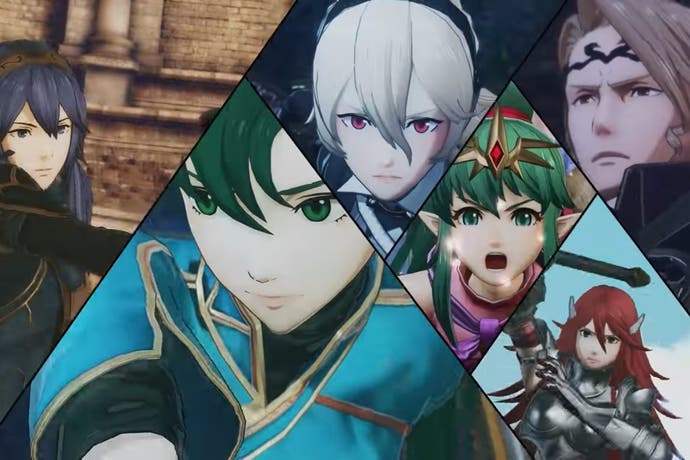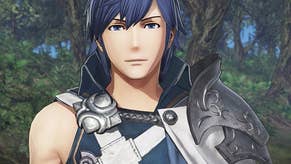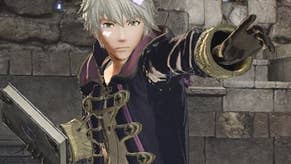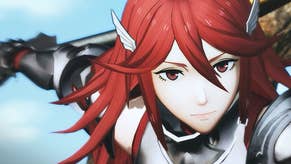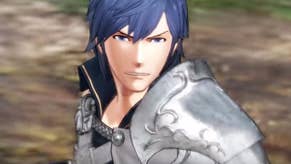Fire Emblem Warriors review
Hack and mash.
For all its idiosyncratic brilliance, Hyrule Warriors - the first time that Nintendo loaned its characters and mythology to Koei Tecmo in return for a fidgety battlefield opus (this time dressed in felt green) - was an untidy marriage. On home turf, Link is a solitary warrior-errand boy. He typically works alone, and never at the head of a battalion of devoted footsoldiers. By contrast the "musou" genre (roughly and boastfully translated as "un-paralleled") is an impressionistic take on the chaotic medieval mêlée. Nervously shuffling anonymous squaddies crowd the battlefields of these games, ranks through which you and your comrades spin and splice in weaponised pirouettes. Link is no stranger to the 360-degree sword swipe. But, thematically speaking, he's more apt to use it to chop the heads off daisies than murder a mob of military men.
With its feudal arenas, martial structures and panoramic cast of comrades, Fire Emblem, Nintendo and Intelligent Systems' foundational strategy series, is a more natural fit for musou's inflexible template. While, in the hands there may be few similarities between Fire Emblem's traditional mode - designed for sofa-bound generals, who may ponder and prod manoeuvres with an unhurried finger - and musou's frantic, urgent pad-mashing, there is symmetry here. The musou games are built for the officer classes, not privates: focus solely on sword-to-sword combat without a crow's eye perspective and you'll soon lose.
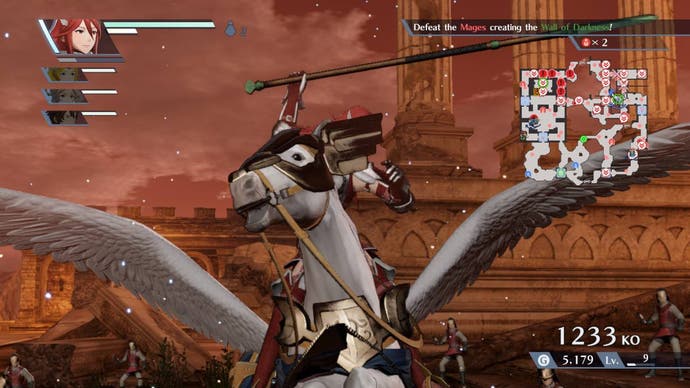
As in traditional Fire Emblem games, battles are won through strategic planning and reaction. Likewise, while there are bright stars within Fire Emblem's constellation of protagonists, none are as indispensible like Link (in fact, as any Fire Emblem veteran will tell you, the fact that your officers can be irrevocably lost in battle, without bringing the war or plot to an end is part of the series' essence.) Immediately, then, Fire Emblem Warriors feels like a more harmonious proposition than Hyrule Warriors. Moreover, while its systems invigorate the Musou outline in ways that often exceed the genre's precursors.
While the hyperactive story focuses on a pair of twins, Lianna and Rowan, in battle you play as an ensemble cast, free to switch between a number of various characters at the touch of a button. Fire Emblem's traditional weapon triangle, whereby swords beat axes that beat lances that beat swords, incentivises infidelity: a mounted unit will be able to carve a neat path through swordsmen, but unless you switch to another character when you arrive at a fort that's occupied by an archer, you risk a swift death. As in traditional Fire Emblem, unless you opt out of the rule, a character's death is permanent; they will leave a gap in the story following their departure. As such, players must pick the right tool for the right job in a way that has never been a true concern for the genre before.

At least as much of the game takes place on the minimap in the corner of the screen as in the main area of the screen. Here you can stay abreast of the tide of the battle, which is turned by eliminating the bosses of outposts and forts, which turns the encampment to your side's colour, and immediately summons a squadron of soldiers to defend the area. The temptation is to forge ahead, but areas of your creeping territory left entirely undefended by an officer remain vulnerable; the enemy can turn them back to their colour, so you'll need to carefully manage the arrangement of your most powerful units to ensure that you're not wasting time rushing back and forth between different frontlines, but instead moving forward in a co-ordinated manner, with a robust rear guard.
The predictable rhythm of each battle is upset by all manner of interruptions and emergencies. You might, for example, need to forge through to a particular segment of the map in order to rescue a potential ally, or to stop an enemy messenger from sprinting through en route to call for back up. Flying units can cross chasms and pull down drawbridges that allows foot-soldier through, and some maps are swamped with lava that must be cooled by triggering rain-enticing magical runes before soldiers on foot or hoof can pass without taking damage. Timers, both hidden and explicit, exert a constant ambient pressure; race forward too quickly and there's a chance that you'll trigger an overwhelming number of demands.
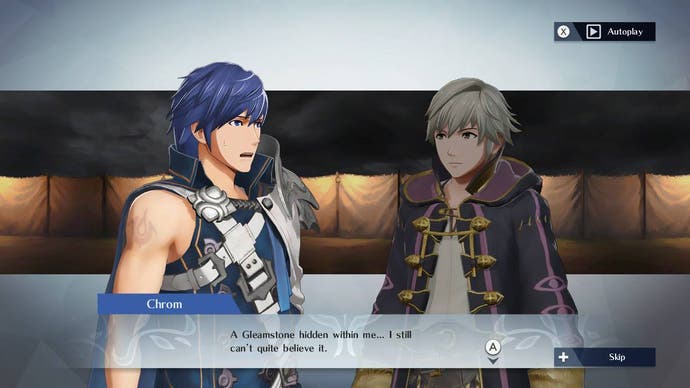
Expectedly, each of the dozen or so characters comes with a repertoire of exuberant, fanciful moves which can be strung together into elaborate chains of attack. These build a meter that can be spent on somewhat drawn-out finishing moves, complete with dramatic close-ups of your character's determined face (a novelty which soon wears thin). There is now the chance to pair up with other officers on the battlefield, moving together as one, even joining up for frenzied a finishing move that is, in many cases, unique to the specific pairing.
Outside of battles the infantile voice acting will grate all but the most hardened survivor of American anime dubs, while a great deal of time must be wasted flitting between various sub-menus as you manage your characters' abilities and equipment. Defeating enemy officers in battle nets materials that can be used to improve each individual character's attack and defence capabilities (adding new moves, for example, or improving resilience to a particular weapon type). Individual weapons can be broken down and re-forged with powerful buffs, but you must access an entirely separate area of the game to equip those weapons. Without an option to blanket equip every character with their optimal load-out, dipping into endless nested menus after each battle is tiresome enough to spoil the game's broader flow.
Those who are able to cultivate a resilience or blind spot for these micro-management niggles will be left with perhaps the most joyous and textured musou game yet. Fire Emblem not only fits Koei Tecmo's structures with unmatched elegance, its rollover systems enrich and improve the design in a way that, perhaps, could not be bettered by any other crossover, Nintendo-born or otherwise.
